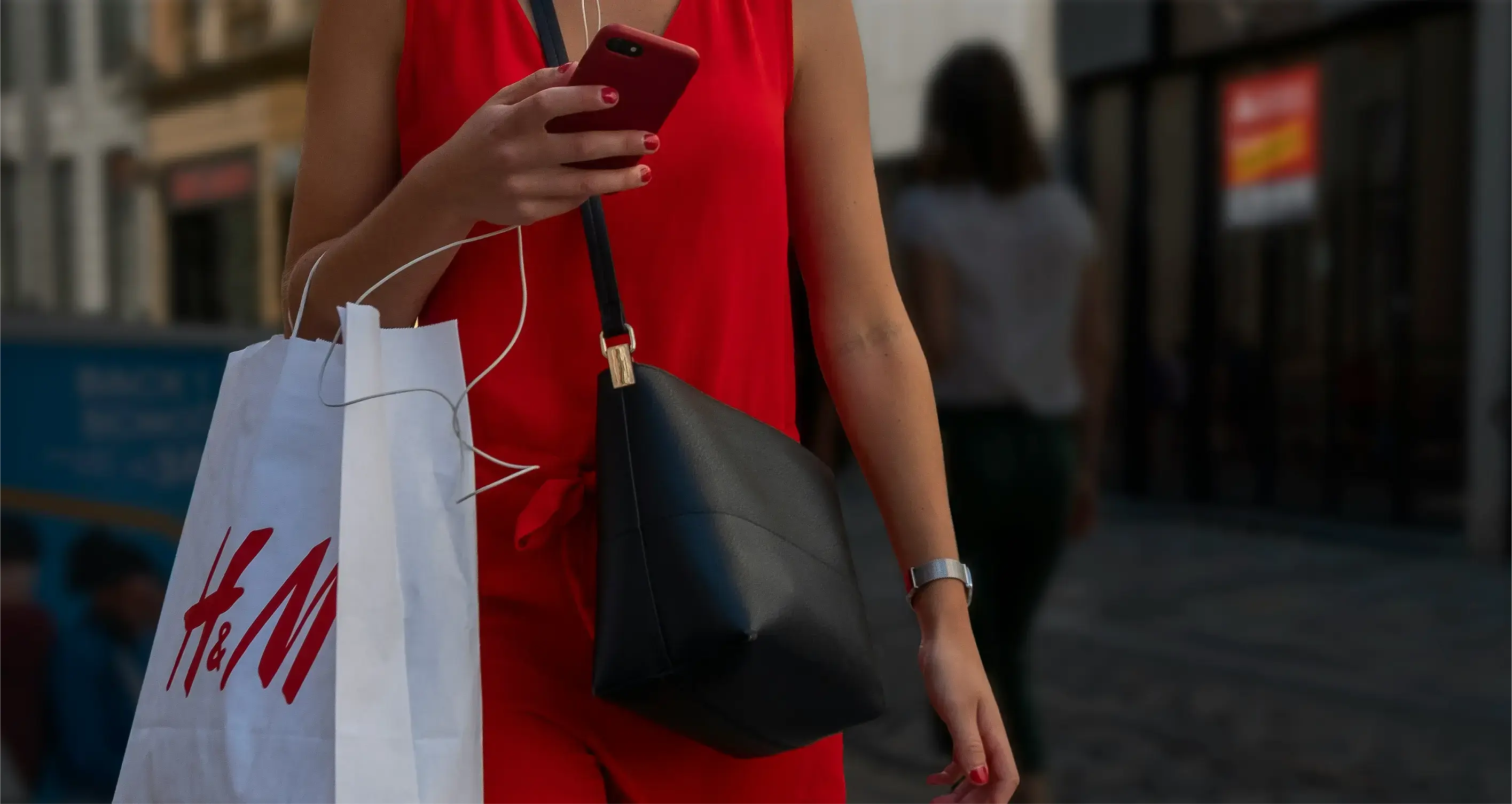
In today’s retail landscape, building customer loyalty is more crucial than ever. For many brands, a loyalty marketing strategy can mean the difference between fleeting sales and a lifelong relationship.
One great example of a brand that has cracked the code is H&M.
H&M’s loyalty program has not only boosted customer retention but also created a community of engaged shoppers who feel rewarded and appreciated. Their loyalty program includes over 100 million members, who spend approximately 3x more than non-loyalty customers.
So how did they do it?
In this blog post, I’ll take a deep dive into H&M’s loyalty program, explore why it works, and uncover how you can replicate its success.
How H&M's loyalty program works
H&M’s loyalty program embodies the perfect blend of simplicity and value. Launched to reward loyal customers, it has a two-tier structure—Members and Plus Members—offering increasing benefits as customers engage more with the brand.
Customers earn points for every dollar they spend, which can then be redeemed for vouchers or special discounts. The loyalty program also provides exclusive perks like free shipping, early access to sales, birthday discounts, and personalized offers based on shopping history.

Plus Members—who reach a certain point threshold—unlock even more perks such as invitations to special events and early product launches. This tiered system keeps folks motivated to keep spending and engaging with the brand to unlock the next level of rewards.
The key here is frictionless participation. As a busy shopper myself, convenience is something I value quite a bit. I want the different aspects of my day-to-day feel effortless—and that includes shopping!
Unlike programs that require customers to jump through hoops, H&M’s program integrates seamlessly into the shopping experience, encouraging natural engagement.
What makes H&M's loyalty program successful?
What makes H&M’s loyalty program so effective? It comes down to a blend of personalization, customer engagement, and strategic incentives. These elements make customers feel valued, and that sense of appreciation keeps them coming back.

1. Personalization is at its core
H&M leverages customer data to tailor offers and promotions that resonate with individual shoppers. This isn’t just about sending a blanket 10% off coupon. Instead, H&M’s program dives into shopping habits, recommending products or offering discounts on items it knows the customer will love. This kind of personalization is a game-changer for keeping customers engaged.
Starbucks employs a similar strategy with its program, giving customers challenges each week to earn points that are unique to their buying habits. (Try buying the same drink every day for a week and then stop. You’re almost guaranteed to get a challenge that will give you a free drink in exchange for buying your previously purchased drink 3 times in the next week.)
Another example of a company that does a great job blending personalization and rewards is Nordstrom. As a member of the Nordy Club, I frequently get product recommendations and sales alerts based on my browsing and buying habits. And when I launch the Nordstrom app, I’m greeted by name (“Welcome back, Francesca!”) and invited to browse Nordstrom’s top picks—again, based on my shopping behavior.
2. Rewards drive genuine engagement
Earning points for every dollar spent is a tried-and-true strategy, but H&M takes it a step further by offering bonus points for activities that aren’t directly tied to spending. For example, customers earn extra points for actions like recycling old clothes through H&M’s sustainability program. This is a win-win strategy—H&M promotes its eco-conscious initiatives while customers earn additional rewards. A common non-purchase action that brands will reward is reviewing a recent purchase.
3. It builds community
H&M’s loyalty program fosters a sense of belonging. When customers reach Plus Member status, they’re not just unlocking perks, they’re becoming part of an exclusive community with access to unique experiences. Whether it’s an invite to a pre-sale event or sneak peeks at upcoming collections, customers feel like insiders.

Sephora’s loyalty program is particularly good at this too. For well over a decade now, the brand has held exclusive educational, promotional, or entertaining events for their top loyalty tier.
4. They regularly reinforce member perks
It’s not easy to stay top of mind, even among your frequent shoppers. That’s why it pays to send nudges, reminders, and personalized promotions to highlight the value of membership and encourage continued engagement.
H&M sends regular emails to its loyalty program members, sharing exclusive offers, upcoming sales, and new arrivals. The company also has a dedicated page on its website detailing the benefits of membership, how to earn points, and how to redeem rewards.
Similarly, Nordstrom stays top of mind through frequent emails containing personalized recommendations and timely deals. Nordstrom also reinforces the perks of its program by offering an in-app “Benefits” tab that allows me to view my current tier and available rewards. The app features a progress bar that clearly shows how close I am to reaching the next reward tier, which motivates further engagement and spending.
Challenges and considerations: What could go wrong?
Even though H&M’s program is highly successful, there are still challenges that need careful consideration.
Balancing simplicity and value can be difficult
A program that’s too complex can alienate customers. On the flip side, if it’s too simple, customers might not feel like the rewards are worth the effort.
A good balance here is to offer straightforward ways to earn points while providing opportunities for customers to engage more deeply through limited-time offers or tier-based perks that feel like bonuses.
Personally, I engage most with brands that make it easy to earn points while still gamifying certain activities (e.g., double points day or bonus stars initiatives).
Standing out in a crowded market
In a world where nearly every brand has a loyalty program, it’s easy for customers to become overwhelmed or disinterested. (90% of companies now offer some type of loyalty program.) H&M has navigated this challenge by making its rewards program stand out with personalized offers and tiered rewards.
Ensuring the program remains profitable
Offering deep discounts and special perks can be costly. H&M has the scale to support this, but smaller businesses need to ensure their loyalty programs are financially sustainable. A loyalty program that drains profit margins is not going to be viable in the long run.
How you can replicate H&M's success in your own business
While H&M is a global retail giant, its loyalty program offers valuable lessons for small and medium retailers. You don’t need a huge budget to replicate the core elements of their success.
Here are some best practices you can take from H&M’s success.
Keep it simple
Ensure that your loyalty program is easy to understand and participate in. Whether you choose a point-based system or a simple punch card, the goal should be to reduce friction. Customers shouldn’t have to jump through hoops to earn rewards. Consider integrating your program directly into your checkout process or through an app to make engagement seamless.
And, of course, make sure your program works seamlessly across multiple channels. Have you ever felt the frustration of trying to redeem points in-store that you earned online, only to find out the systems aren’t connected? I know I have, and let me tell you—an overly complex experience can almost guarantee that I won’t shop with a brand again.
Offer meaningful rewards or tokens of appreciation
SMBs might not have the resources to offer huge discounts, but they can still provide rewards that matter. Think: exclusive experiences, personalized offers, or small perks like free shipping. Partnering with other local businesses to create joint loyalty programs can also expand the appeal and increase the value for your customers.
Meaningful and non-tractional tokens are an excellent way to show your customers that they’re not just another number to your business. In my experience, the most memorable rewards are those that make me feel valued and appreciated—like a surprise birthday discount or a handwritten note—because they go beyond just transactional value and create a personal connection.
For example, here's a note I received from a retail assistant at Chanel:

Leverage personalization
Even with limited resources, SMBs can still harness the power of personalization. Use data to understand your customers’ buying behaviors and tailor offers accordingly. If a customer regularly buys coffee from your café, send them an offer for a free pastry with their next coffee purchase. These small touches go a long way in making customers feel special.
Build community around your values
Create a sense of belonging around your brand. Whether it’s through exclusive events or early access to new products, give your loyal customers the feeling that they’re part of something special. You don’t need a huge following to create this; even small-scale events can foster a deeper connection with your audience.
Reward engagement—even if it's not a purchase
Just like H&M rewards customers for bringing in old clothes to recycle, SMBs can encourage non-purchase engagement. For example, offer points for writing reviews, sharing your brand on social media, or referring a friend. This not only drives engagement but also promotes your brand to a wider audience.
Loyalty goes beyond discounts
H&M’s loyalty program is successful because it taps into a broader understanding of customer behavior. It isn’t just about offering discounts; it’s about fostering a relationship between the brand and its customers. The program is an extension of H&M’s identity—fashion-forward, community-driven, and rewarding in more ways than one.
As an SMB, you can take cues from H&M’s approach by focusing on creating personalized, valuable, and engaging experiences for your customers. Remember, loyalty isn’t built overnight—it’s a series of small interactions that, over time, turn occasional shoppers into devoted fans.
Whether you’re offering exclusive events, rewarding engagement beyond purchases, or simply making customers feel valued, the goal is to create a program that feels less like a transaction and more like a community. And in today’s competitive retail environment, that can make all the difference.
Ready to create a winning loyalty program? Marsello's loyalty and marketing software gives you all the tools you need to reward customers and keep them engaged. Learn more.
Get advice from a loyalty expert.
Read more: 7 Steps To Building A Profitable Loyalty & Rewards Program


